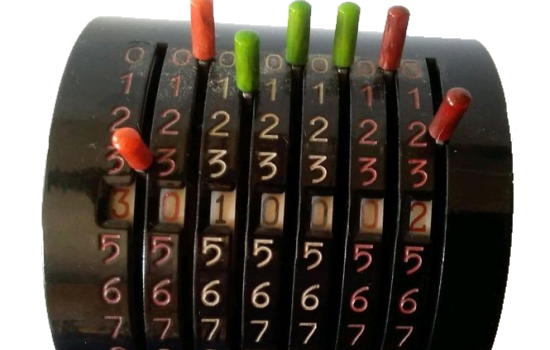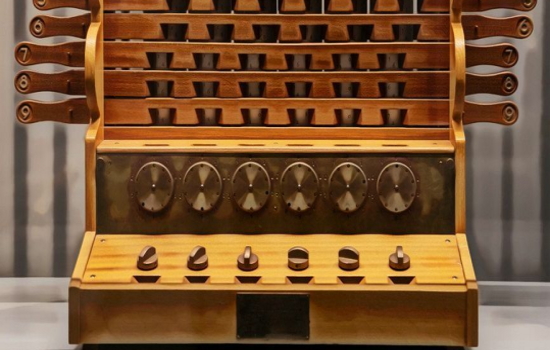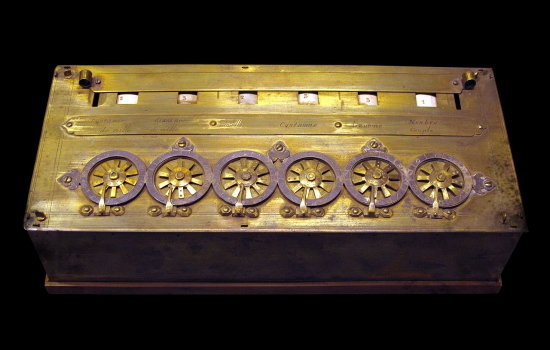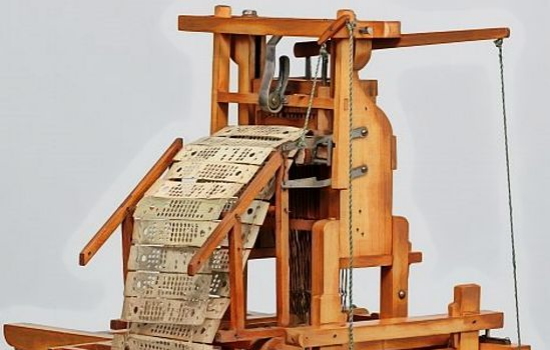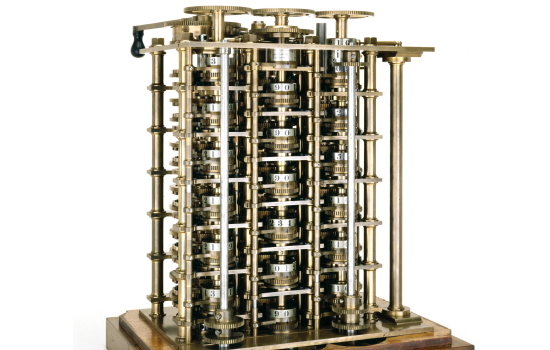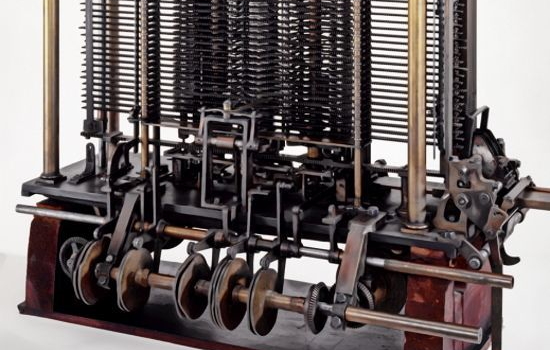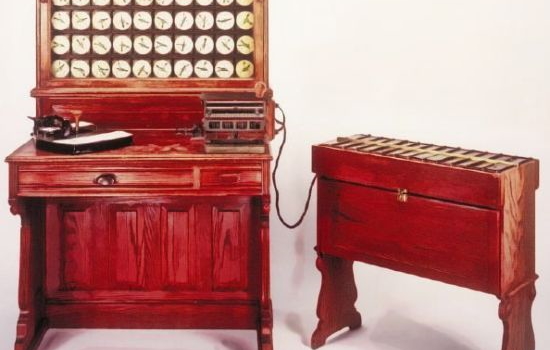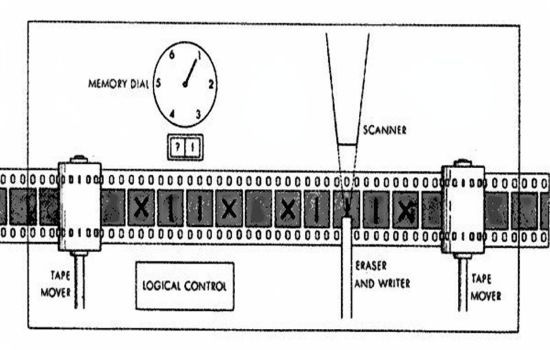C:\Games\DarkAges\Calc_Machines



Calculations in all four basic arithmetic operations
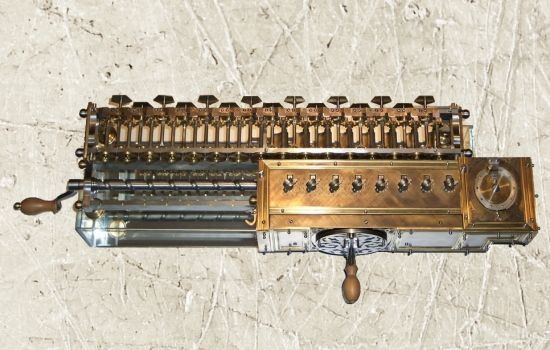
The first calculating machine for mechanically solving all four basic arithmetic operations was invented in 1671 by the philosopher, mathematician and polymath Gottfried Wilhelm Leibniz (1646-1716). Leibnizens calculating machine (of which there are five successive versions) was a historical milestone in the construction of mechanical calculating machines. The staggered roller principle he invented, which made it possible to perform multiplications mechanically, remained an indispensable basic technology for over 200 years. Leibniz had the idea that his calculating machine should be able to multiply by successive additions, just as it should also be able to divide by repeated subtraction. For this purpose, Leibniz needed mechanical number memories in order to be able to transfer a set number several times to the result mechanism of his calculating machine. For this purpose, he first developed the principle of the sprocket wheel, a gear wheel with 9 variable teeth. Since its construction would have been too complicated, however, he devised instead a roller with 9 staggered ribs of different lengths on it, the so-called staggered roller. For addition, the crank was to be turned counterclockwise, and for subtraction, clockwise. This led to the fact that Leibniz also had to construct the tens carry in both directions of rotation in a functioning way. The tens carry is realized similar to the calculating machine of Schickard by a gear wheel with only one tooth. This gear wheel rotates in such a way that, at the transition from 9 to 0, it meshes exactly once with the next higher digit in the result mechanism and rotates this digit by one. While the tens carry in Schickard’s calculating machine is transmitted immediately, Leibniz decided to use a mechanical intermediate storage, i.e. a two-stage tens carry. Thus, a multiplication by 12 does not mean 12, but only 3 crank turns. An additional one-digit revolution counter tells the user how many times the crank was turned per digit. When dividing, the result is added up in the revolution counter. The reconstruction in the Arithmeum took „only“ 10 years, in contrast to Leibniz’s 40 years of construction. This gives a good idea why Leibniz had the clockmaker build his machine for so long.

Table of contents


